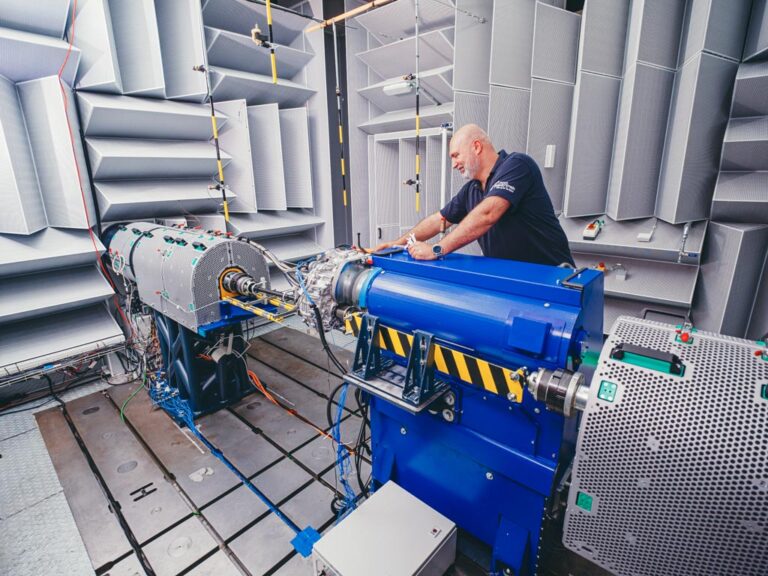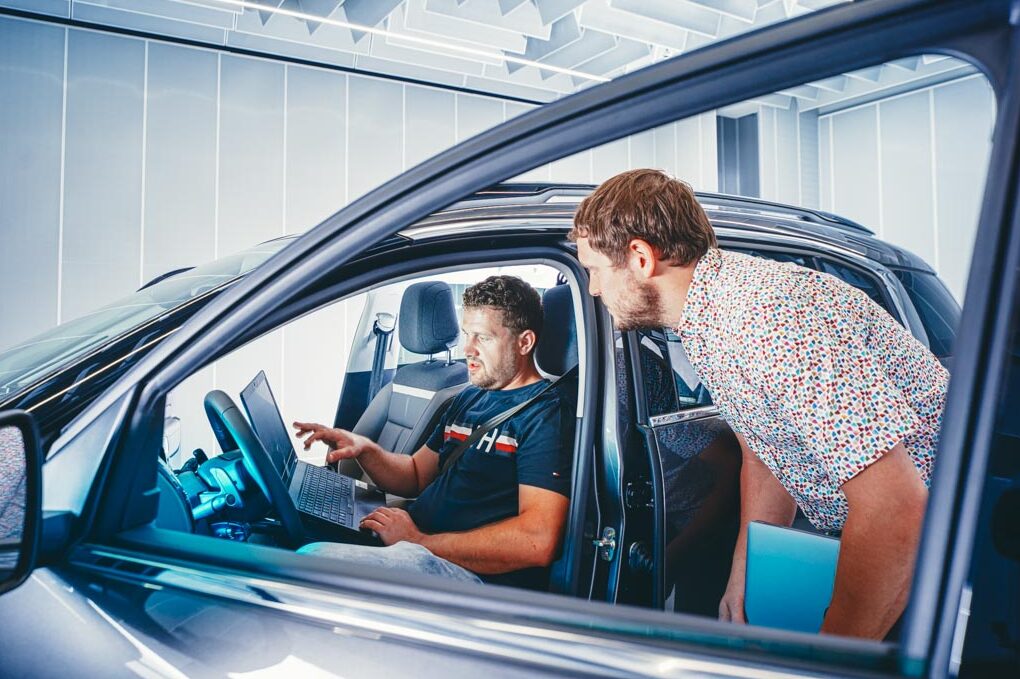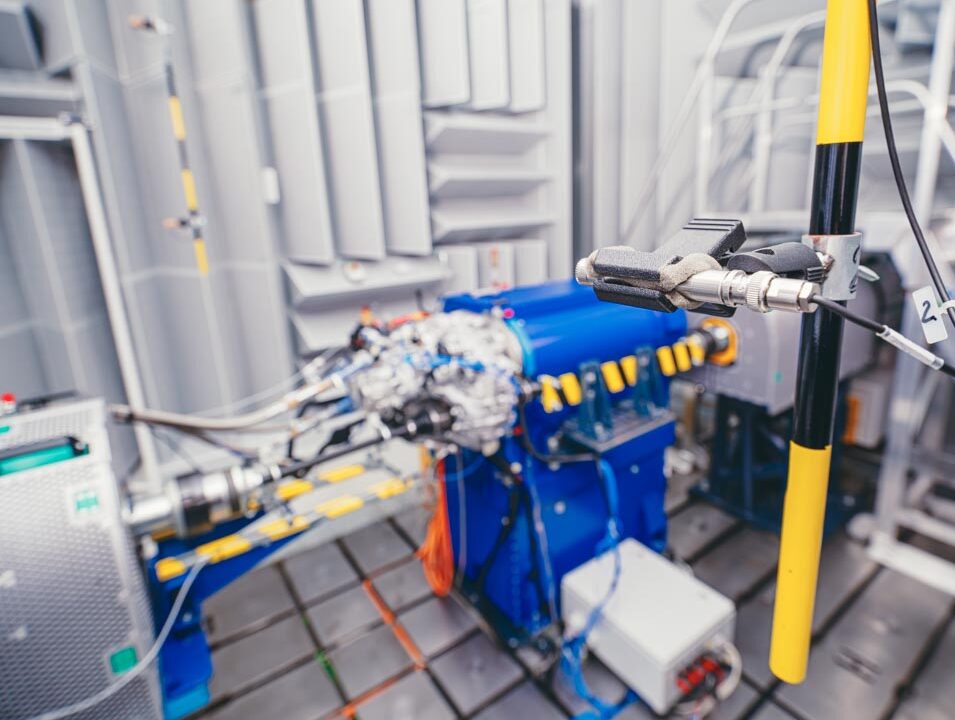In-house testing infrastructure is a big part of Punch Powertrain’s success story. To continuously improve upon its technological prowess and keep that position of industry leader, Punch Powertrain has developed an in-house NVH testing process that leaves no room for error. Through end-of-line testing, 100% of all products are tested in under 3 minutes. In addition, Punch Powertrain runs partially automated tests on its dedicated state of the art bench for troubleshooting and runs a series of standardized in-vehicle tests to trace and eliminate all NVH issues. This combination makes for an agile production of e-DCT transmission units with the fastest possible turn-around.

Noise, vibration and harshness
Noise, vibration and harshness or NVH-testing, is a crucial step in the development of a drivetrain product. Any of these three parameters can greatly impact perceived quality for the end customer. While these markers can seem predominantly subjective, there are a lot of objective measurements that can be taken to eliminate these unwanted side-effects of a mechanical gearing set-up.
Inline testing of every product
At the end of the line, every unit passes an automated run of 180 seconds, followed by an auto-judgment based on set of predefined criteria. Of that test run, 60 seconds are dedicated solely to NVH-testing. Any issues found here are then looped back into production with the necessary improvements.
Any major issues are tested for correlation on Punch Powertrain’s state of the art in-house test bench. This bench is used for troubleshooting and extra testing in support of e-DCT and DT1. Maximizing the potential of both the test bench and the available engineers, it is used in the daytime for set-up, scripting and debugging. At night, testing runs are fully automated, only to be monitored by a skeleton crew of one engineer. This makes for the fastest possible turn-around time in the industry.
With its state of the art test benches and time-saving standardized testing to ensure the fastest possible turn-around time, Punch Powertrain is optimizing its e-DCT production, while continuing to develop its other product lines.


In-vehicle experience
A Hybrid transmission usually has more gears operating under load, due to the addition of the electric drive. In the case of e-DCT (or DT2), the unique compact architecture can even further increase this number for some gears.
In comparison with a hybrid transmission, a conventional mechanical gearbox typically has only 2 gear meshes being driven. More moving parts increase the chance of noise and vibrations. By installing microphones in a test vehicle, at the driver ears or other suspect locations, engineers are then able to record, analyze and isolate the different frequencies. Combined with at least one accelerometer, a standardized series of tests – both in- and outdoors, on the test track up to 50 kph, as well as a run on public roads – is then performed. Once the bench and road tests are completed the input data analysis will enable engineers to determine the source of any problematic noises and to troubleshoot the issues.
With its state of the art test benches and time-saving standardized testing to ensure the fastest possible turn-around time, Punch Powertrain is optimizing its e-DCT production, while continuing to develop its other product lines.
Related news items


